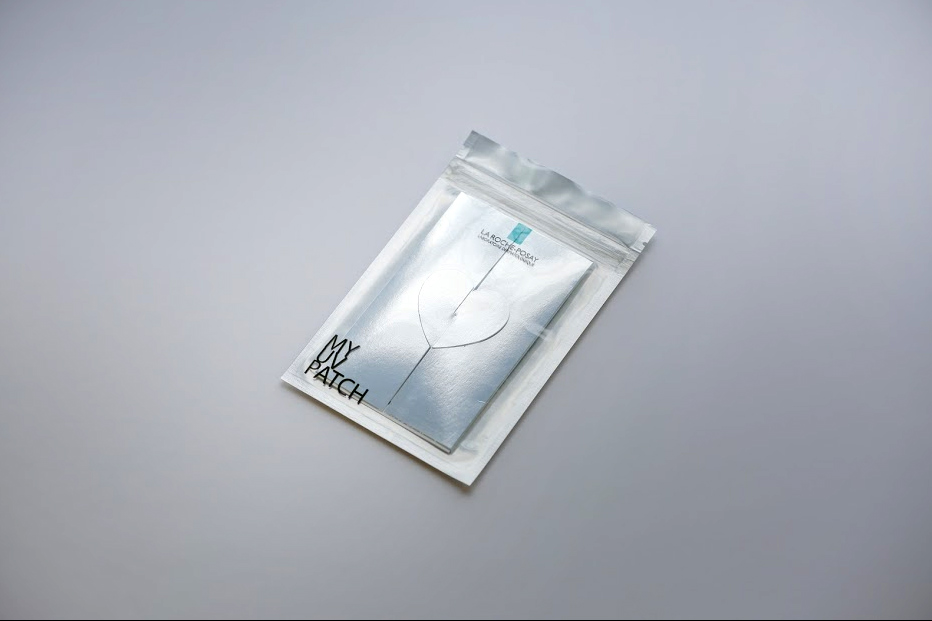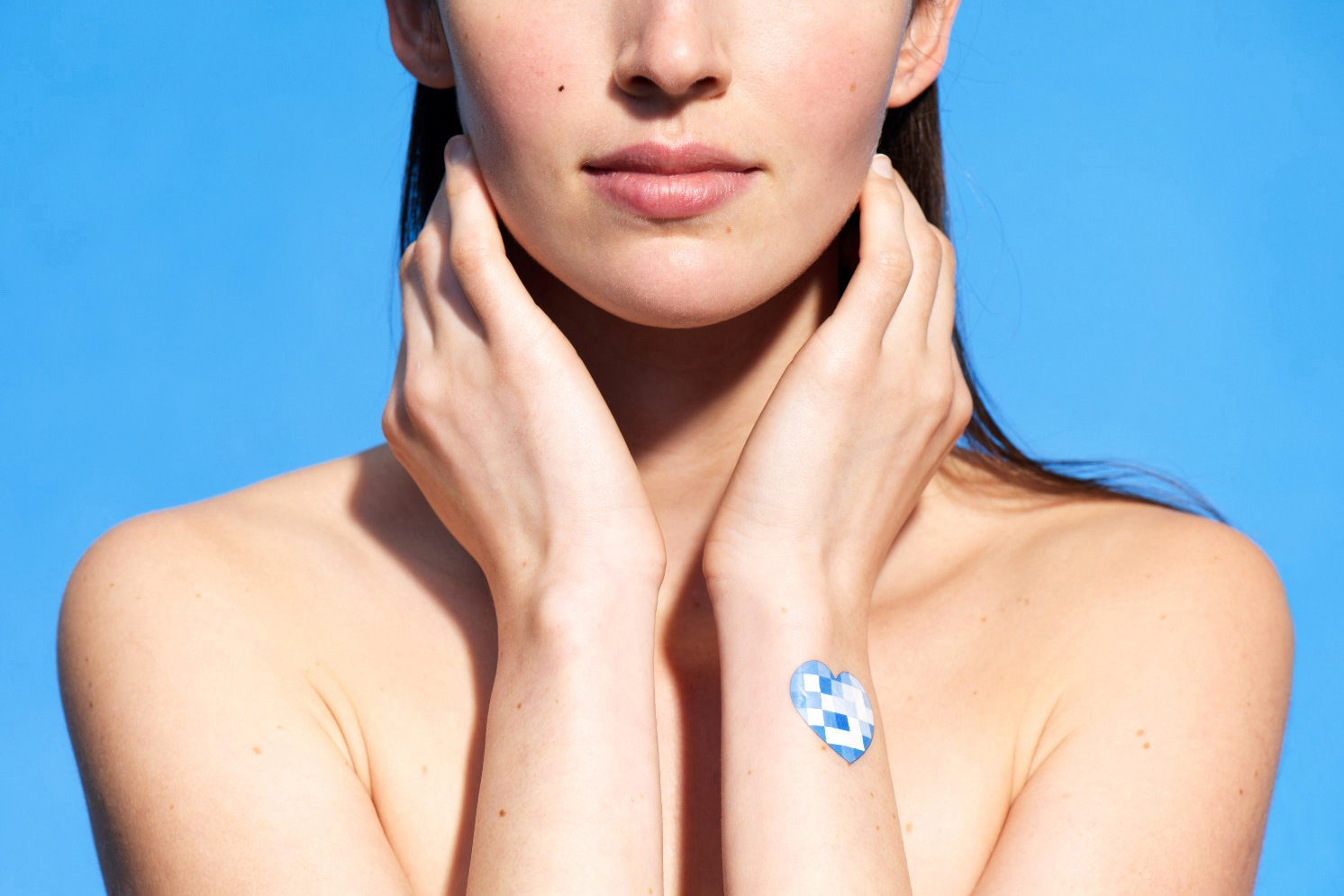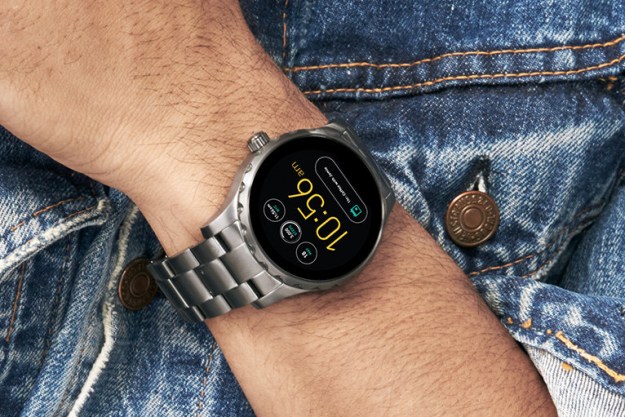It’s highly unlikely that right now, you associate L’Oréal with cutting edge wearable technology, but the more-than-a-century old beauty company is about to change that preconception with a groundbreaking piece of stretchable, wearable tech called the My UV Patch.
Developed with healthcare technology company MC10 and set to be marketed under the La Roche-Posey brand later this year, it’s an almost ridiculously simple, yet technically fascinating way to monitor skin exposure to UV rays. Beyond that, it’s a push into bringing health-based wearable tech to potentially millions of people. Oh, and did we mention it’ll essentially be free?
The patch is almost ridiculously simple, but it’s a technically fascinating way to monitor skin exposure to UV rays.
The My UV Patch looks something like those temporary tattoos worn by kids, but it’s actually a stretchable electronic skin patch. It measures less than 50 micrometers thick, which is less than the thickness of a human hair. It really does become part of your body. Despite the svelte design, it consists of five different layers — an adhesive to hold everything together, photo sensitive dyes, an NFC array, an encapsulating layer for it, and the medical grade adhesive for the skin.
Once stuck to your skin in a spot that’s sure to be exposed to the sun, the amount of UV exposure is measured and indicated using photosensitive dyes. The blue and white squares will alter in color depending on the UV rays detected. That’s nothing really new. What’s cool is the simplicity with which real, actionable results are retrieved. Remember, this is a patch, not a bracelet or a broach with a battery; yet it still collects data and syncs with an app on your phone.
It uses NFC or a camera to retrieve the data
The iPhone app opens with a camera view, and after snapping a picture of the patch — where you cutely line-up the heart-shaped patch in a heart-shaped window — the day’s exposure is transferred and shown in a graph, as well as a graphical indicator of when you’ve had enough for the day. You can check the metrics at any time and as many times as you like. The app also has push reminders to make sure you don’t forget to look at your UV exposure.
When the Android app arrives, there’ll be no need for the picture, and instead the patch will use NFC to connect and gather the data. It’s the same as tapping a phone onto a Bluetooth speaker to link them up, and it was incredibly quick in out demo. Since the patch will most likely be on your hand or arm, you won’t need to be a contortionist to bring phone and patch together.
They last for about five days once applied, are showerproof, have no batteries, and there’s no initial cost or ongoing cost to the patches. Sticking the patch onto skin took seconds, and there’s no special method to use, plus the data shown in the app is presented clearly. In other words, it’s easy to integrate into everyday life. It’s only available as a heart shape, which may not suit men. For now, it only comes in blue and white — because of a current restriction of the photosensitive dyes — but other colors are possible in the future.
L’Oréal’s taking the patch, and its development, very seriously. For example, MC10, the company which makes the stretchable material, already produces medical-grade second-skin wearable tech for the healthcare industry. It has also spent time refining and perfecting the gathering of UV exposure data using the patch, ensuring it keeps up with more traditional methods in terms of accuracy.
It’s about changing behavior
Why should you care about measuring UV light exposure? Overexposure can cause premature ageing, wrinkles, and other skin problems. At worst, it may contribute to skin cancer. Using the right products — which L’Oréal and La Roche-Posay sell, obviously — and minimizing the time spent, unprotected, in the sun can reduce these problems. L’Oréal considers the patches an important step in bringing about a behavioral change regarding overexposure to harmful rays.
How do you get one? L’Oréal says they’ll be made available at no cost later this year, in 15 different countries including the U.S. and the U.K. The distribution methods haven’t been finalized yet, but the patches may be part of giveaways at salons, or come with related products. I was told a wide range of options will be implemented. L’Oréal wants to make it easy for people to obtain a My UV Patch.
Some may scoff L’Oréal’s My UV Patch is little more than a promotional tool for selling creams, but it’s way more than that. It’s a a non-tech company using cutting edge wearable tech to promote a healthier lifestyle. And, they’re not charging anything extra in the process. It’s very hard not to get excited about that.
Highs
- Simple to apply
- No costs
- Fast, easy data transfer
- Waterproof
Lows
- Only one design
Editors' Recommendations
- The quirkiest and most unusual mobile tech at CES 2023
- Personalized beauty tech will shake the very foundation of the skincare industry








